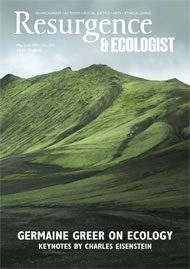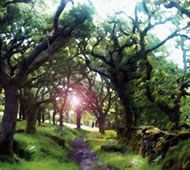“But this moment is what we have, and love is deepened at the most implausible times”.
Here is that rare type of novel: a story really rooted in place, and equally deeply embedded in each moment as it passes. This may sound an odd opening line of a review, but Angwin’s novel The Burning Ground, moves through sudden loss, deep grief, emotional turmoil and further loss by being so rooted in the landscape and the situation she has planted her central character Tamar in, that this sense of perspective becomes clear as the story develops.
Angwin is also a poet and a creative writing facilitator, running the highly successful and respected Fire In The Head programme, and this thirst to live and communicate deeply, shown in other work, including her first novel, Imago, breathes through The Burning Ground. Tamar is ablaze with an aliveness that sears from the page into the imagination.
Elsewhere, Angwin has written that she explores the terrain of “inner and outer landscapes”, and of her belief in human potential and our power to renew. This is abundantly evident within this 304-page exploration of circumstance.
Despite dealing with these weighty themes, and a large part of the novel describes the terrible impact of the foot and mouth disease upon one farming household and the wider farming community within Devon and Cornwall, it is not a gloomy read. There is an uplifting sense here.
Angwin is alive to the possibilities of life, and Tamar learns from her passing experience, through an observation and reflection:
“Despite the rain the sweet smell of the silage that Bob had opened for the cattle from the baled stack in the home meadow caught my nostrils and for a moment lifted my spirits. I’d become a true farmer’s wife: as long as the hay was in and there were logs in the woodshed I could feel secure.”
The arc of The Burning Ground takes the reader on a physical journey with Tamar from Dartmoor to Brittany and back, but it is the exquisite story hewn from stone, heath, tree, and bone that root it in place.
I particularly liked the al fresco lovemaking in the French woods with Tamar’s paramour – the writing cements her characters within their emotional and physical situation, as well as locking them within the reader’s mind and shunting the passage of the novel forward:
“…I still live, or rather, live again – in the only place where I have always wanted to live, on Dartmoor: those 365 square miles of relative wilderness: granite tors, galloping amber peaty rivers, hawks, bones, ponies, bog-cotton, the ghosts of Stone Age hunters, Bronze Age agriculturalists, mediaeval farmers, rabbitmen and tinners.
I can’t imagine ever tiring of this place: it’s spaciousness, it’s skies, it’s changing faces under sun and cloud and storm and ice…”
Tamar lives her life much like the river that wends along the Devon/Cornwall border. She is pulled by forces, resting in the eddies, and occasionally struggling to survive within the white water of energy and actions, such as the foot and mouth crisis, and the attraction for a man that rips open her life still further and takes her onto new ground, and she hopes, higher territory:
“I’ve accepted that to live life fully means accepting that loss and pain are inevitable. Finally, now, I have. I didn’t then. But what alternative do we have? Life isn’t safe, and it’s not possible to love safely, either. Saying yes to love, or to life, means saying yes to loss and death too. The only way we can insulate ourselves at all is to live smaller lives…”








